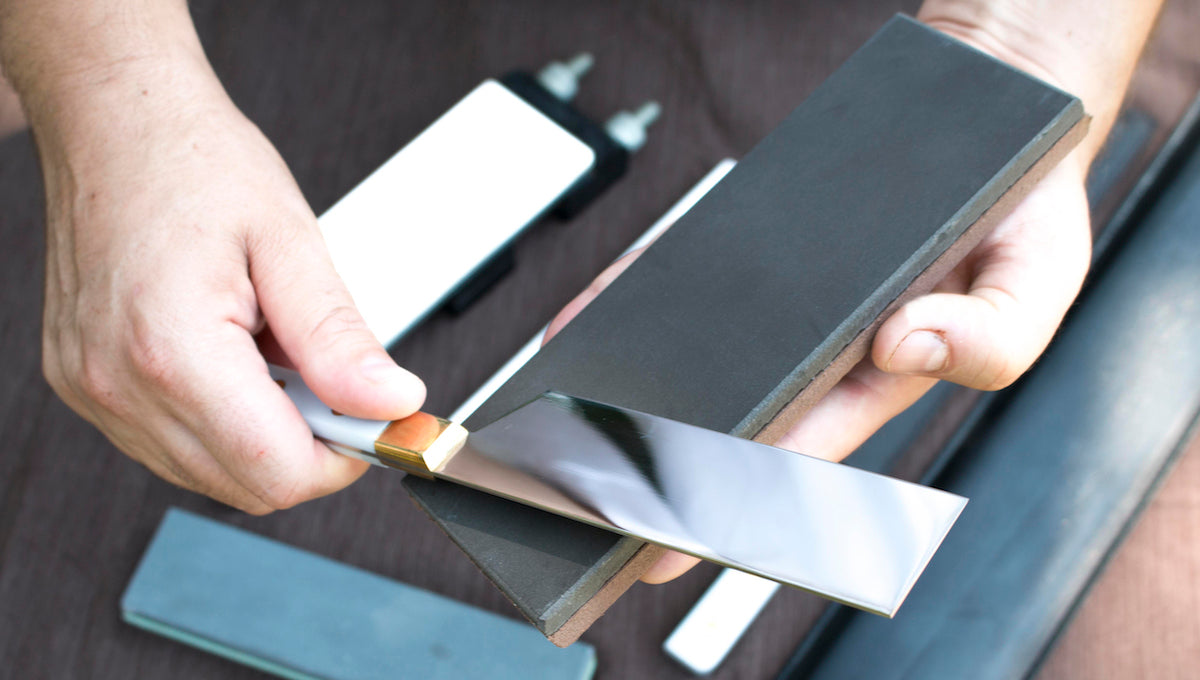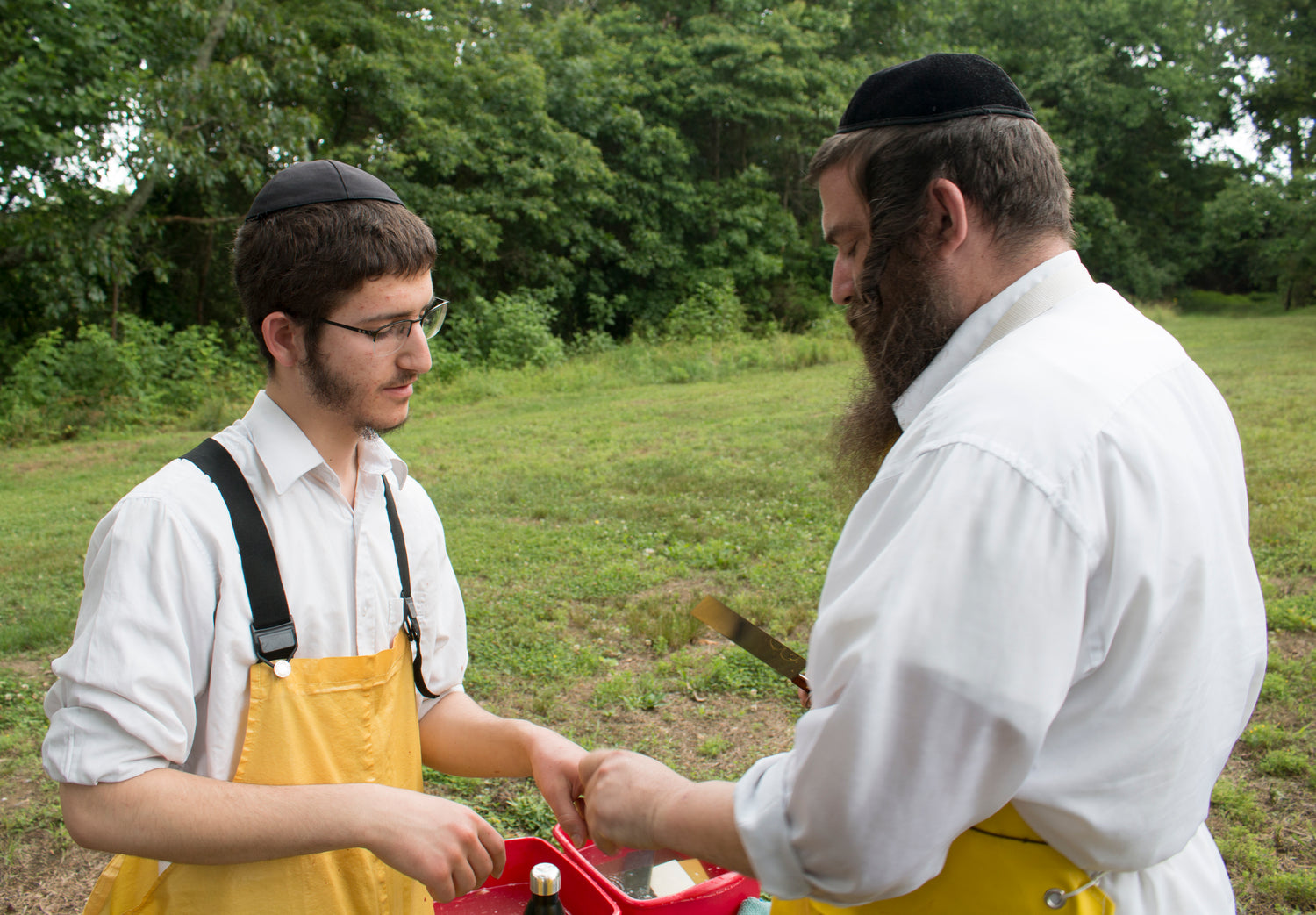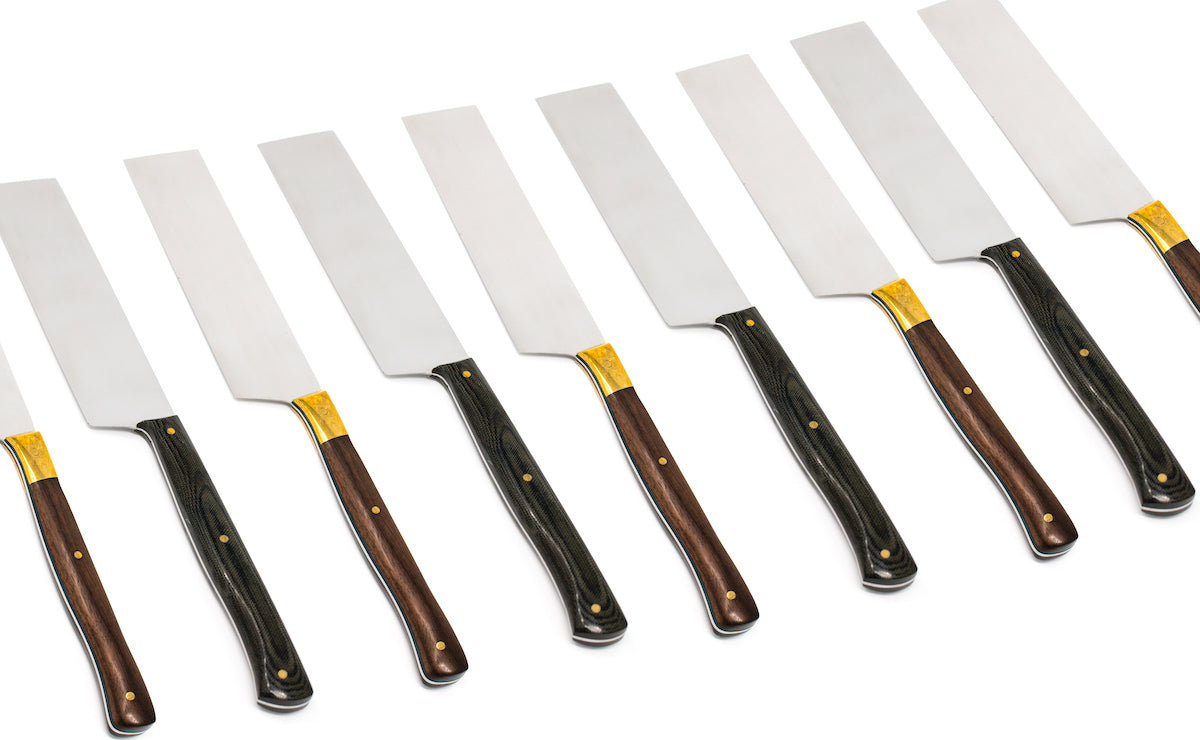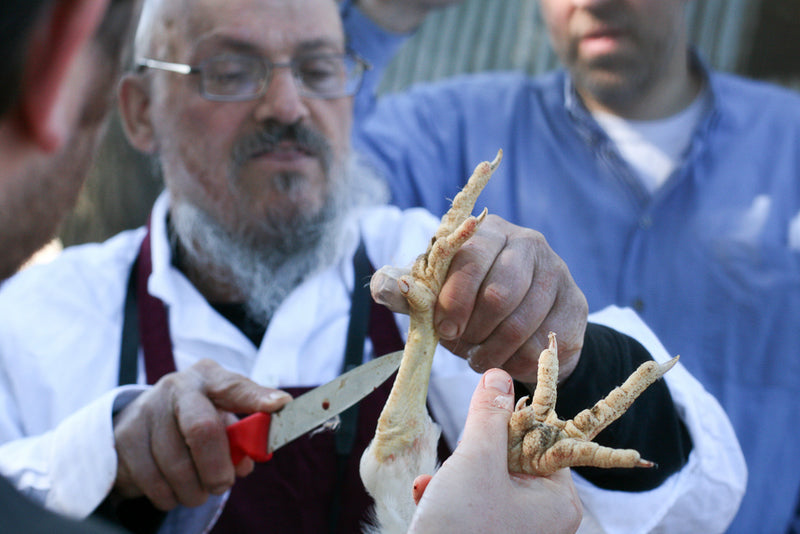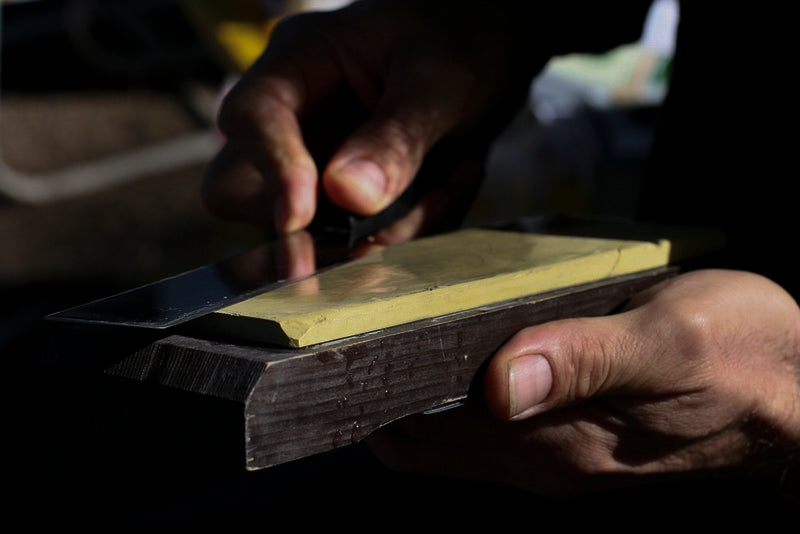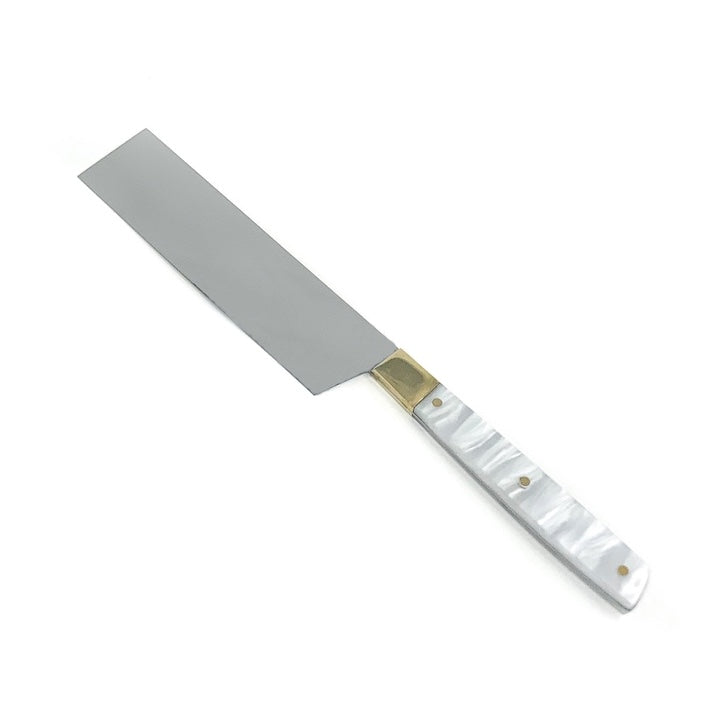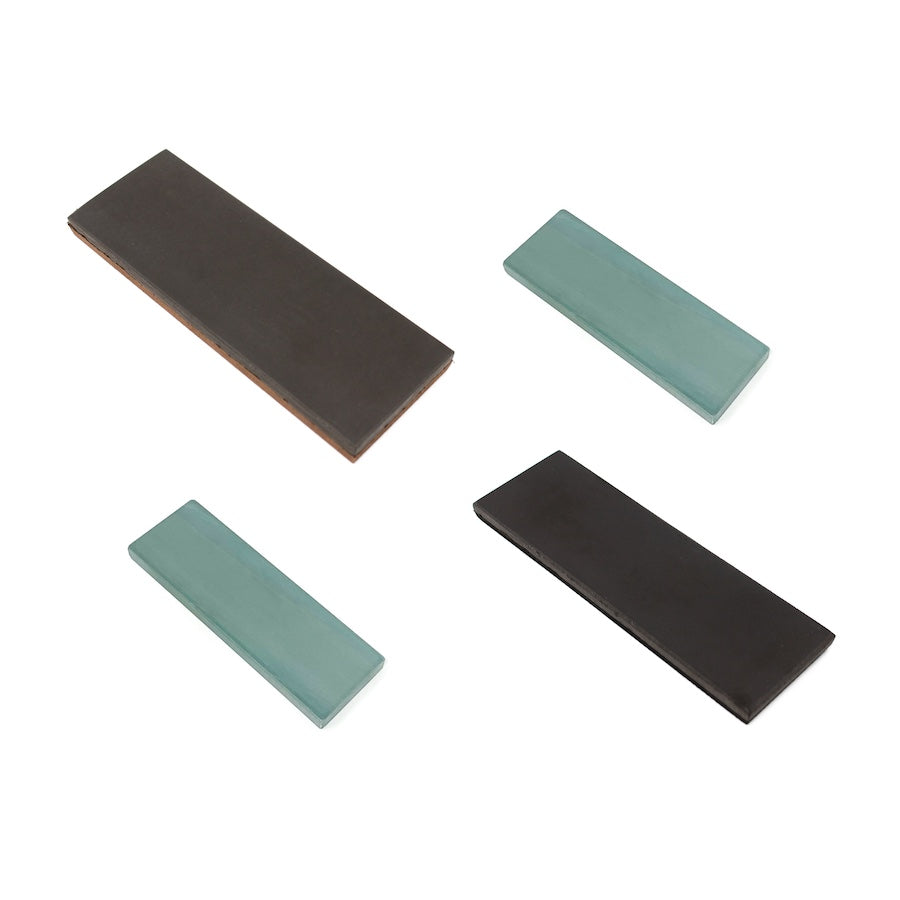From The Shop

Type:
Synthetic Sharpening Stone Sets
Type:
Synthetic Sharpening Stone Sets
Kosher Cuts Blog
Knife Sharpening for Shechita
Sharpening a shechita knife (aka chalof or chalif) is a specialized skill that requires precision, patience, and the right tools and methods. This post provides an overview of the tools and techniques used for knife preparation and ongoing maintenance. While it covers many important details, it is does not remotely cover everything you need to know. If you’re just interested in general knife sharpening or not planning to perform proper kosher slaughter, online tutorials may be enough. But if you’re looking to become a lay or professional shochet, hands-on training is just as essential as learning the halachos. Knife sharpening is arguably the hardest part of shechita—and the quality of your teacher can make all the difference. We’ve seen many students waste months going in circles with teachers who don’t know how to transmit the information effectively, only to come to us and start over from scratch. With the right guidance, most of our students learn to sharpen properly in just 5 to 15 hours! Regardless of who you learn from, we strongly recommend learning from a qualified shochet who understands how to properly form a burr. If your teacher doesn’t know how to make a burr, find someone else. If a shochet doesn’t understand how to make a burr (and sadly there are many who do not) they don’t understand the very basics of knife sharpening. KNIFE PREPARATION Safety First! Before we get into the details of shechita knife sharpening, it’s important to address a major safety concern commonly encountered in the kosher slaughter world. Unlike in general knife sharpening—where the stone is typically placed on a table—it’s standard practice during shechita knife prep for the shochet to hold the sharpening stone in one hand. This method carries significant risk. If sharpening this way, always wear a cut-resistant glove on the hand holding the stone. Step 1: Make a BurrUse a low-grit stone (220–250#) to form a burr on both sides of the edge. This begins the shaping process and removes any nicks or damage. Step 2: Medium Grit RefinementUse a medium-grit stone (1000#) to refine the edge and remove the heavy scratches left by the coarse stone. At this stage, you should also form a small burr on both sides, ensuring the edge is properly aligned and ready for polishing. Step 3: PolishingUse a high-grit stone (6000–8000#) to polish and smooth the blade, preparing it for the final finish. Step 4: FinishingUse 1–2 natural stones to bring the edge to its sharpest, smoothest finish. Traditionally in the shechita world, both a black and a green stone are used, but one high-quality stone can be sufficient—especially when paired with a premium synthetic set. If you’re preparing a knife for the first time, we recommend starting with one of our beginner's knives. These more affordable knives are ideal for practice and can later be kept as a reliable backup. Practicing on a high-end professional knife is not only a waste of money—it can also damage a tool that’s meant to last for years. KNIFE MAINTENANCE Step 1: If your knife needs heavy work start hereUse a low-grit stone (220–250#) for fixing nicks, straightening the edge, and performing heavier sharpening. Step 2: If your knife needs medium work start hereUse a medium-grit stone (1000#) for fixing light nicks, light sharpening, and refining the edge by removing coarse scratches. Step 3: If your knife needs light work start hereUse a high-grit stone (6000–8000#) for minor sharpening and polishing, smoothing the blade and preparing it for finishing. Step 4: Finish hereUse 1–2 natural stones for the final polish and to bring the edge to peak sharpness. SHARPENING ANGLE There are many approaches to sharpening angles. We recommend two: Low angle (~11.25°) – For creating a fine, sharp edge High angle (~22.5°) – For refining and strengthening the edge These angles provide excellent results for shechita knives and are the standard we train our students to use. SYNTHETIC SHARPENING STONES We offer both basic and premium-grade synthetic sharpening stone sets. While the basic set is effective, we strongly recommend the premium set, which lasts significantly longer and produces superior results. It’s the same set we provide to our students. SYNTHETIC STONE SET INCLUDES: Low Grit (220–250#) – For creating an edge, removing nicks, and fixing damage Medium Grit (1000#) – For removing coarse scratches and refining the edge High Grit (6000–8000#) – For final polishing and smoothing Flattening Stone – Keeps your sharpening stones level and effective, extending their lifespan Diamond Stone – For prepping and cleaning your stones NATURAL FINISHING STONES Natural stones are used for the final, ultra-fine polish. They significantly enhance sharpness and smoothness but must be handled with care—contamination can easily cause a nick, and sharpening at the wrong angle can dull the blade. We provide grit estimates, but actual grit varies naturally between stones. Each natural stone comes with a piece of sandpaper for cleaning and prepping the surface. Some people prefer using a 1000# stone or polishing stones for prep, but we recommend sandpaper. AVAILABLE NATURAL STONES: American Finishing Stone – ~10,000+ grit Black Finishing Stone – ~10,000+ grit Green Finishing Stone – ~15,000–20,000+ grit Sharpening a shechita knife takes time, discipline, and the right instruction—but once mastered, it becomes one of the most rewarding parts of the craft. With the right tools, a sound method, and proper training, even the most daunting edge can become razor-sharp and ready for avodat kodesh
Learn moreThe Five Disqualifying Acts
There are five primary acts that will disqualify a kosher slaughter. In Hebrew, these are called the ḥamisha poslei shechita (the five disqualifying acts): Shehiya / Pausing – Any pause during the incision renders the meat non-kosher. The knife must move in one continuous, uninterrupted motion. Chalada / Covering – The knife must be drawn visibly across the throat. It may not be stabbed into the neck or obstructed by fur, feathers, or any other barrier. Drasa / Chopping – The cut must be performed with a smooth back-and-forth sawing motion, not by pressing down or chopping as one would cut a pumpkin or turnip. Hagrama / Misplaced Cut – The incision must be made within the correct area of the throat: roughly below the vocal cords and above the base of the neck. Ikur / Tearing – If the trachea or esophagus are torn rather than cleanly cut, the slaughter is invalid. This usually results from a nicked or improperly sharpened knife. These five prohibitions are the foundation of the laws of shechita. Established thousands of years ago, they are still followed by kosher slaughterers today. As the Shulchan Aruch (Yoreh De’ah 23:1) states: “Any butcher who does not know the laws of shechita—it is not permissible to eat from his slaughter. And these are the laws: shehiya, drasa, chalada, hagrama, and ikur.” Modern animal welfare research has affirmed their wisdom. Temple Grandin, a leading expert in humane livestock handling, found that when these laws are properly observed, an animal’s reaction to the cut is drastically reduced or eliminated altogether. It’s remarkable that these ancient laws have been validated by modern science. If you’re beginning to study kosher slaughter, the ḥamisha poslei shechita are the very first principles to master. * In studies, there was either no reaction or the reaction was equivalent to that of an animal receiving a vaccine or having a flag waved in its face. (Grandin Regenstein 1994)
Learn moreThe Shechita Knife
The shechita knife—often referred to as a chalif (chalef/chalof) or sakin—is a specially designed, custom-made tool. Its unique design, maintenance, and use help the shochet avoid performing one of the hamisha poslei shechita (the five disqualifying acts). If you’re not yet familiar with these, you’ll want to read our post on them before continuing with this article. Knife Design A kosher slaughter knife must be at least twice the length of the animal’s neck. This ensures the shochet has enough space to make a smooth sawing motion, rather than chopping down on the neck, which would disqualify the cut through drasah (pressing). Following this tradition, we label every knife in our shop according to the animal it is best suited for. Additionally, each knife is squared at the end to prevent stabbing into the animal’s neck (ḥaladah). Pictured below are our Beginner’s Poultry Knife and Professional Shechita Knives for poultry, sheep, and cattle. Sharpening and Maintenance Unlike most knives, kosher slaughter knives rarely come with a finished edge. Instead, the shochet must set the edge by hand. This ensures the blade is ultra-sharp and customized to the shochet’s preferred angle. For that reason, all of our knives are sold with either a basic machine edge or no edge at all, requiring hand-sharpening before use. Shochtim are expected to put the edges on their own knives, and anyone without sufficient training should seek proper shechita instruction from an experienced teacher before attempting this. The initial edge, as well as ongoing maintenance, is created using a progression of wet sharpening stones: typically a ~250 grit stone, a 1000 grit stone, a 6000–8000 grit polishing stone, and often one or two natural finishing stones. Complete sets—including flattening and cleaning stones—are available in our shop. Alongside sharpening, shechita knives must be checked frequently for absolute smoothness. This prevents tearing of the neck, which would disqualify the slaughter through ikkur (tearing). After sharpening and between animals, shochtim test their blades by carefully running a fingernail across the edge to detect nicks or roughness. This is a delicate and potentially dangerous process that should only be undertaken with proper training. Purchasing a Shechita Knife If you’re buying a chalif for the first time, we recommend starting with our Beginner’s Shechita Knife for practice. Once you’ve mastered sharpening, you can upgrade to one of our Professional Shechita Knives. Finding kosher slaughter knives in the United States used to be difficult, but today you can source just about any style you need directly through our shop.
Learn moreRabbi Landsman Z”L - Our Teacher
When I first began searching for someone to provide shechita training for our community in Colorado, I looked for months—and came up empty. It wasn’t just that qualified instructors were few and far between—they were virtually nonexistent. Eventually, while flipping through a book, we came across the name and contact information of Rabbi Yisroel Landsman. That discovery changed everything. Rabbi Landsman agreed to come out to Colorado, and what followed was nothing short of transformative. In just over 1 week, he provided a level of training in both shechita and knife sharpening that I had only heard of others taking months or even years to accomplish. His deep knowledge was matched by his masterful approach and joy for teaching. His simchadic spirit, warmth, and enthusiasm made every student feel welcome, capable, and inspired. He wasn’t just a teacher—he was a true mensch and mechanech, uplifting each of us through the process. By the end of the course, I was able to shecht six chickens in one minute without issue—something I would’ve never imagined just weeks earlier. Rabbi Landsman was so impressed with how I had set up the infrastructure for the course that he mentioned the possibility of working together to help run more trainings in the future. After completing his self-guided halacha course a few months later, both I and Rabbi Dovid Shaffier went on to receive kabbalah from Rabbi Landsman. Sadly, that dream of future collaboration was never realized. Shortly after we completed the course, Rabbi Landsman passed away. We were honored to be among the last of the Rabbi’s student to receive his Kabbalah. His dedication to his student’s was so great and even though he was bed ridden and could not speak he made time to finish out our csavim before his passing. His loss was deeply felt—not just by us, but by the many thousands of students he inspired across the world. Rabbi Landsman was to our knowledge the only person providing effective and accessible training outside of the slaughterhouse setting in the United States. He was known not just for his shechita teaching but also instruction in mila, safrus, and so much more. We started The Kosher Cut to carry forward his legacy and fill the need only he had filled in the past. Before The Kosher Cut existed, there was nowhere to buy kosher slaughter equipment online in the United States. But more than filling a logistical gap, we wanted to keep Rabbi Landsman’s teaching model alive. Our entire course is closely based on his structure and approach for both the halacha and hands-on training. Using his proven methods—along with a few additions we’ve picked up along the way—we’ve helped students master knife sharpening and shechita in as little as 1–3 weeks, where other programs often take months. Through The Kosher Cut, we’re humbly working to continue Rabbi Landsman’s legacy to the best of our ability: making high-quality, no-nonsense shechita training accessible in the U.S., and passing down the skills, values, and spirit of a true master teacher. We’re honored to do so and could have never achieved what we have without his incredible instruction.
Learn more



